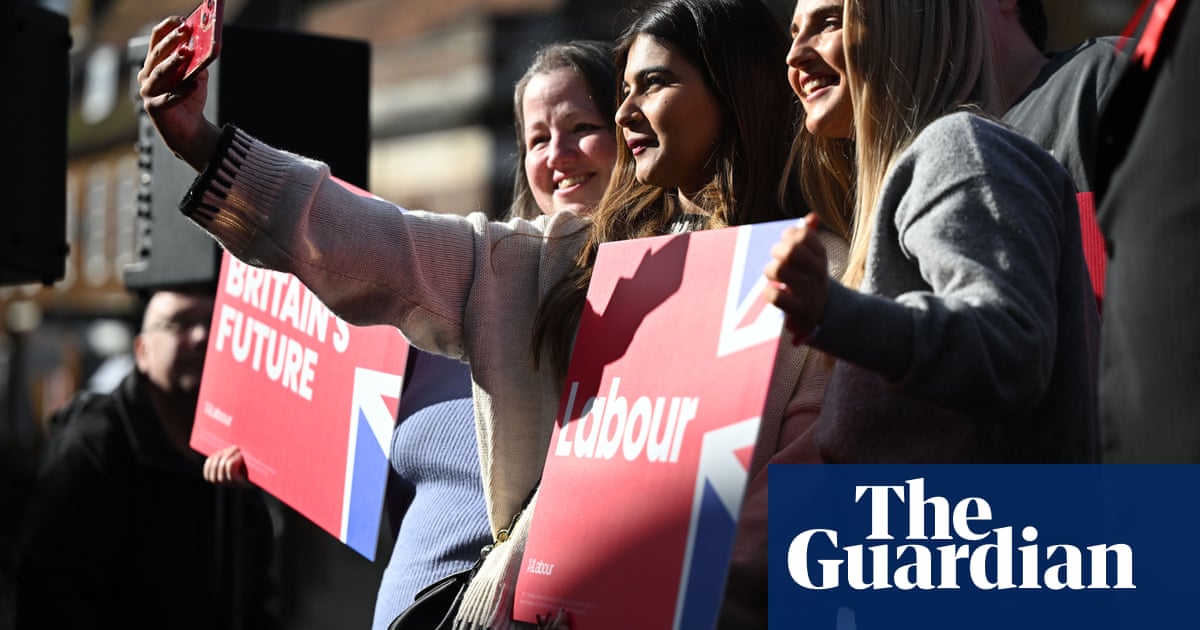
The Wellingborough byelection is one for the record books. The fall in the Conservative share of the vote – an enormous 37.6 percentage points – was the worst the party has ever suffered in a byelection.
The previous record, established in Liverpool Wavertree in 1935, had stood for nearly 90 years, but the swing of 28.5 percentage points from Conservative to Labour was the second-highest since the 1930s, after Tony Blair’s triumph in Dudley West in 1994. It came on the heels of other Labour gains in the last year with monster-sized swings of more than 20 points: Selby and Ainsty, Tamworth and Mid Bedfordshire. Thatcher and Blair in opposition managed two such gains each; Starmer has notched up four.
The swing to Labour in Kingswood was much less spectacular than in Wellingborough, but still a perfectly respectable 16.4 points, in the same bracket as byelections in Wirral South (1997) and Norwich North (2009), each of which took place less than a year before a change of government. It was approximately what one would expect given the national polls show a Labour lead approaching 20 points.
The difference between the swings must owe something to the Conservatives’ choice of candidates for each seat: the partner of the disgraced former MP in Wellingborough and a well-liked local councillor in Kingswood. It also reflects the fact that Labour had fallen further in recent elections, and therefore had more room for improvement, in Wellingborough. The two results together, late in the government’s term, show that the polls are not wrong in pointing to a big swing from Conservative to Labour and that the government is approaching the next election in very bad shape.
There are other electoral trends worth noting. One is that turnout is declining. The turnout in both byelections was poor, worse than Mid Bedfordshire last October but slightly better than Tamworth. The fall in Kingswood, usually a constituency with high participation, was particularly large, perhaps because of bad weather on polling day. While many of the missing voters will be former Conservatives, abstention is a form of protest and the Tories cannot count on persuading them to return when the general election takes place. It seems likely that the next election, like 1997, will see a significant fall in turnout alongside a big drop in the Conservative vote.
Reform UK fared reasonably in both byelections, although 10% in Kingswood and 13% in Wellingborough are a long way short of the results Ukip was achieving in the run-up to the 2015 election. Wellingborough, which voted 63% for leave in the referendum and where the Conservative campaign was in disarray, should have been fertile ground but the campaign never quite took off. As with abstainers, it is foolish for Conservatives in search of a silver lining to lump Reform voters in with the Tories as a rightwing bloc that will come home at the general election; they are protest voters and many of them were expressing strong negative feelings about the government. But the Reform vote will sow discord among the Conservatives about how to respond to defeat.
The Greens saved their deposit in Kingswood, not a bad result given the two-party squeeze. This could reflect disappointment over Labour dropping the £28bn package, but it also comes in the context of the environmentalist reasons for Chris Skidmore’s resignation and the credibility of the Greens in the Bristol area.
Another point to note is that the Westminster ructions about Labour’s bad week – the policy retreat and the mess over its repudiated candidate in the Rochdale byelection – seems to have made little impact on the voters. The byelections were determined by deeper factors: the recessionary economy, strained public services, the unpopularity of the government and the prime minister, and the strong feeling of “time for a change”.
The government is in deep, almost certainly terminal trouble and it is running out of time.












